Mandalay is the second largest city in Myanmar. It is connected to Yangon and the Indian Ocean by the Irrawaddy River. It has a rich history but today we focused on the period in the second half of the 1800s when the last Myanmar dynasty fell to the British.
King Mindon built the royal palace between 1857 and 1859. It is a walled fortress measuring two kilometers on each side and is protected by a moat. King Mindon died and one of his sons, Thibaw, became the new (and last) king of Myanmar.
But it wasn’t that easy. By rights, the new king should have been the first son of the King Mindon’s chief concubine. Thibaw was a considerable way down the line. But his wife, who happened to be his half sister (King Mindon was their common parent) and his mother-in-law schemed to bring him up the ladder to the top rung. They didn’t just use everyday palace intrigue, bribes and whatnot. Instead they invited all the more senior sons (who were also the brothers of both Thibaw and his wife) to a party at which most of them were executed.
King Thibaw won the battle but lost the war. He took over in 1878 but in 1885 the British decided to complete their conquest of Burma and marched 11,000 troops to Mandalay. They marched straight into the palace, arrested Thibow, sent him first to Yangon and then to India where he died 30 or so years later.
One thing King Thibow did, almost immediately upon ascending to the throne, was to move his father’s personal residence building from within the palace grounds to a location outside the palace walls and moat. He then gave the building to a Buddhist monk to serve as a monastery.
The British occupied the palace as a military base. During World War II the Japanese drove out the British and occupied the palace for three years. The British, not being ones to take such action lightly, bombed the palace grounds into smoldering ashes.
Today we visited the monastery. Actually it’s no longer a monastery. The government took it back recently to preserve the last structure from the final Myanmar dynasty. They gave money to the Buddhists to create a new monastery elsewhere.
The monastery is made of teak wood, intricately carved with images from Buddhist mythology. Some of the characters portrayed in last night’s puppet show were represented in the carvings. Today the building is dark from exposure to the elements. Back in the day it was covered with gold leaf inside and out.
In the 19th century small villages surrounded the palace walls, each specializing in a particular craft. We visited areas on Mandalay that still specializes in marble carving (we bought a carved marble Buddha).
We visited the Mahamuni Buddha, the most sacred shrine in upper Burma. This golden Buddha is said to still contain the living Buddha. To pay homage, men (no women allowed) affix pieces of gold leaf to the Buddha. Over the years it has caused the Buddha to assume an overgrown image. Once a day(at 4:00AM) a monk washes the Buddha’s face and brushes his teeth.
We stopped at a shop that makes the gold leaf, pounding into thin wafers – incredible manual labor taking hours to beat the gold leaf with heavy mallets. The work pays well, apparently, but the workmen go deaf from a career banging away on the gold leaf day after day. The workers view their labor as sacred, increasing their karma.
After lunch and a brief rest stop we visited the Kuthodaw Pagoda, home to the world’s largest book. The book is actually a series of small 729 pagodas, each containing a marble slab. Monks have engraved both sides of the slabs with the text that defines Theravada Buddhism.
Sunset time, so off we go to the top of Mandalay Hill (the only hill in the region). The sunset was OK but the real thrill was riding in a Mandalay taxi, a truck bed in which bench seats run down either side. People sit on the benches, the floor between the benches, on top of the roof or hang out the back. Michael, Daniel and I hung out the back, much to Nana’s displeasure and concern. It was a fun, thrilling ride up a steep, bumpy, hairpin-turn road.
Daniel turned us loose for “dinner on your own”. Nan and Ron, Judy and I walked 10 minutes from our hotel and had a nice meal of Chinese and Indian food. We were ready for a break from Burmese fare.
But before letting us go, Daniel had one more cultural experience for us: fried crickets. I mean really good-sized crickets roasted to a crunchy, garlicky brown. It turns out we’re in the peak of cricket season – at the end of the rainy season. They’re caught in rice paddies near Mandalay and brought to town to sell on street corners. Females, with their eggs taste best.
The taste isn’t that bad, if you get over the cricket idea.


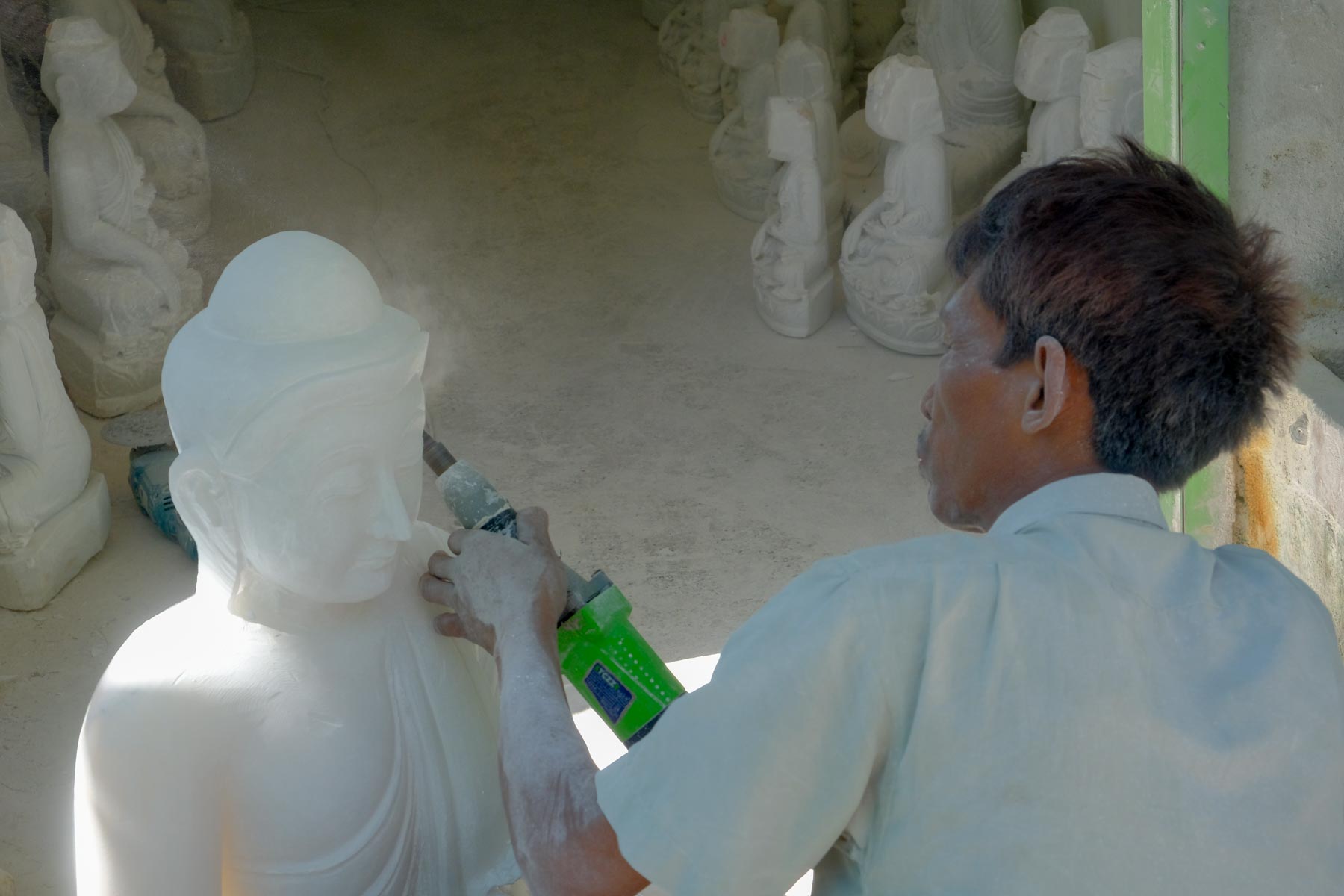

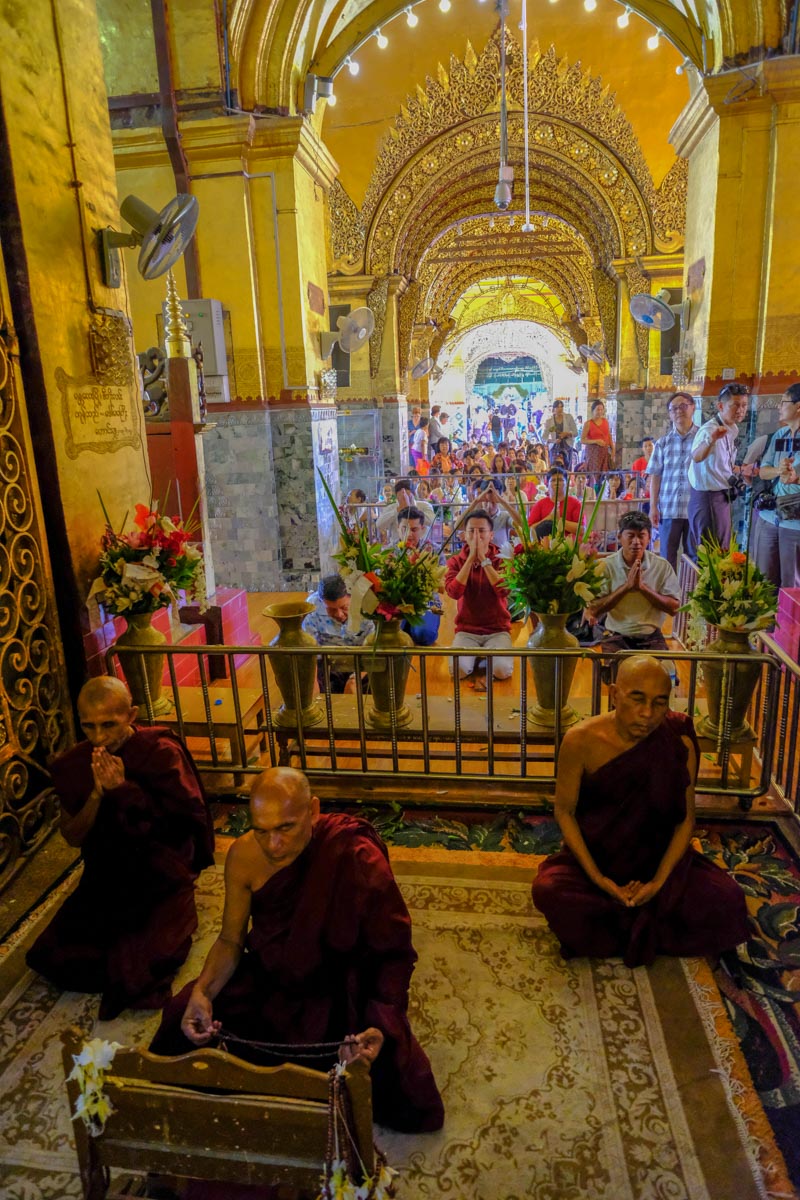


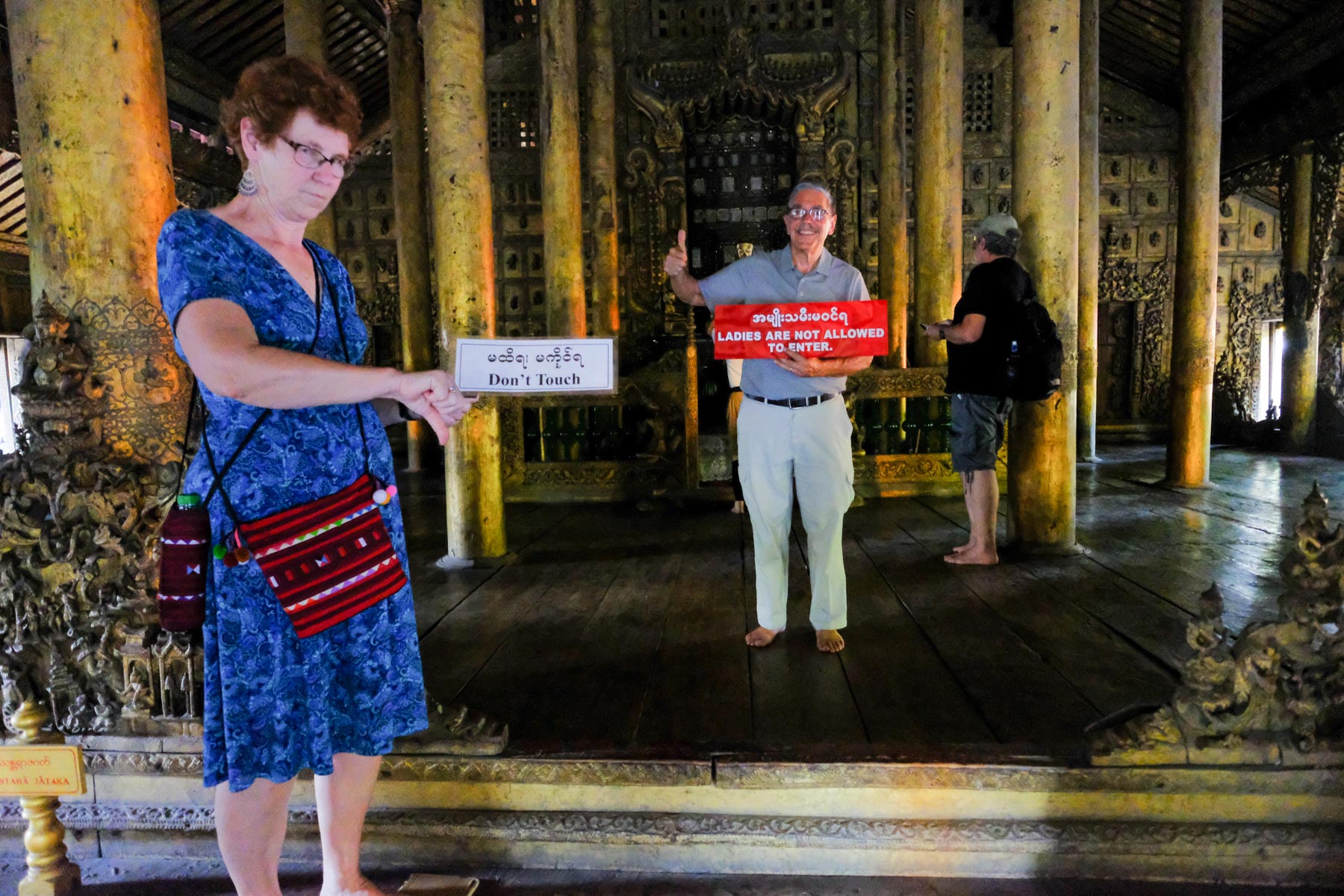

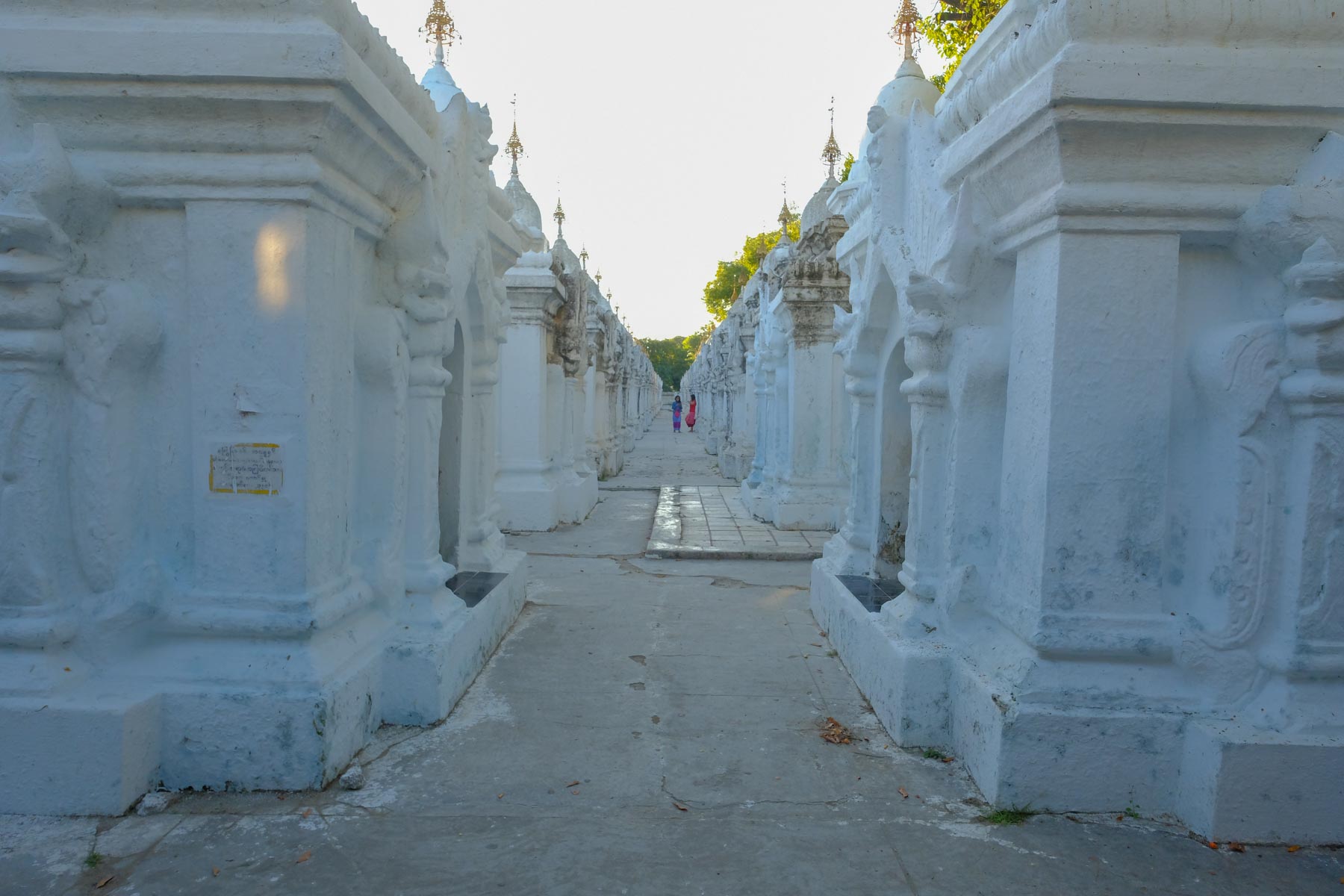
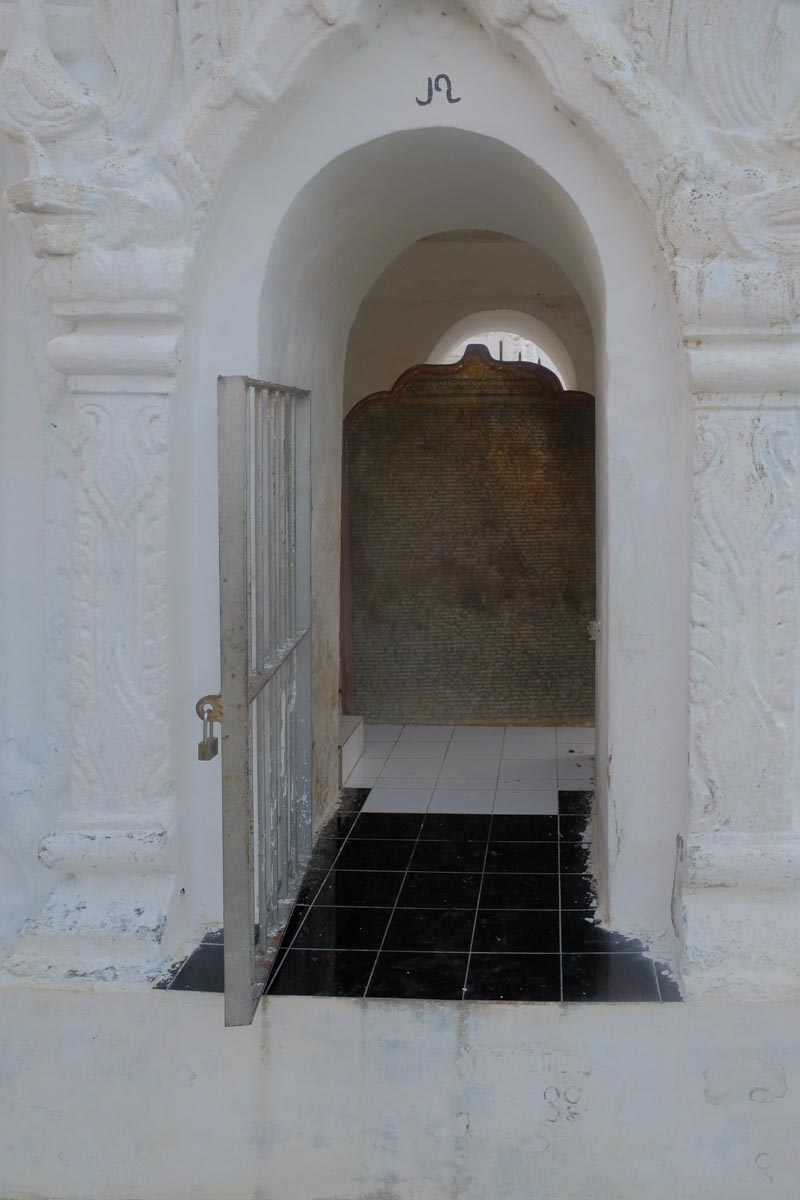
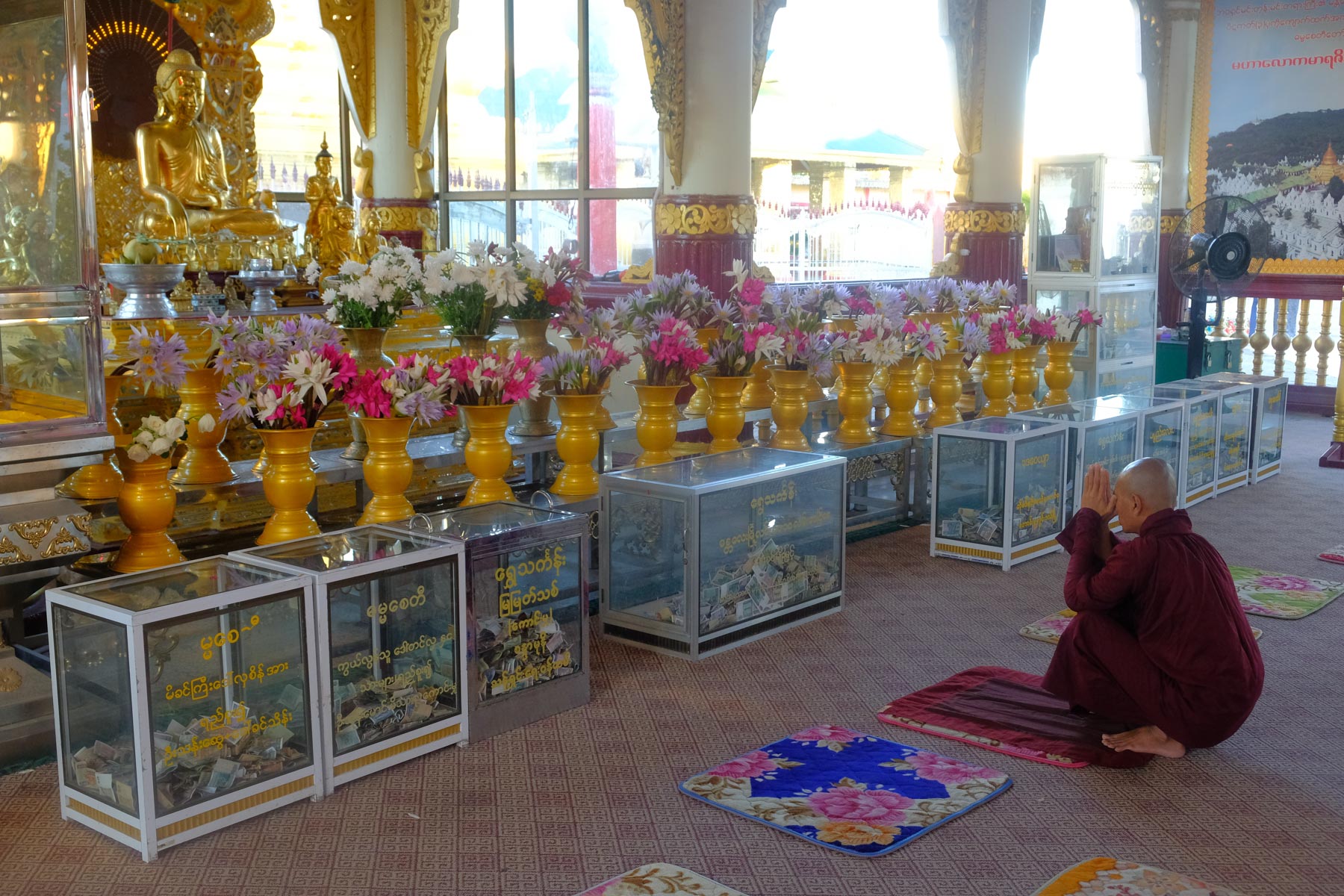
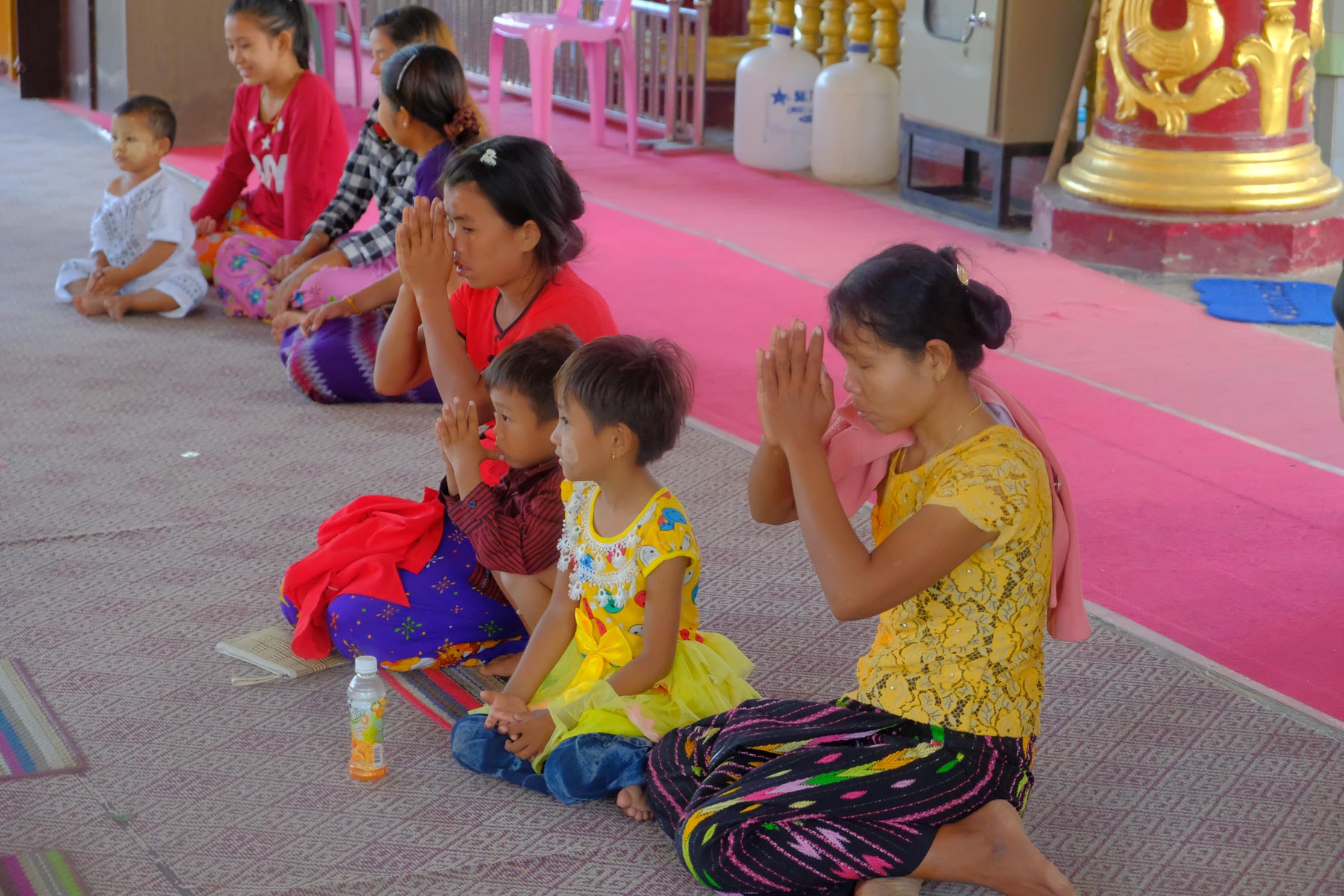
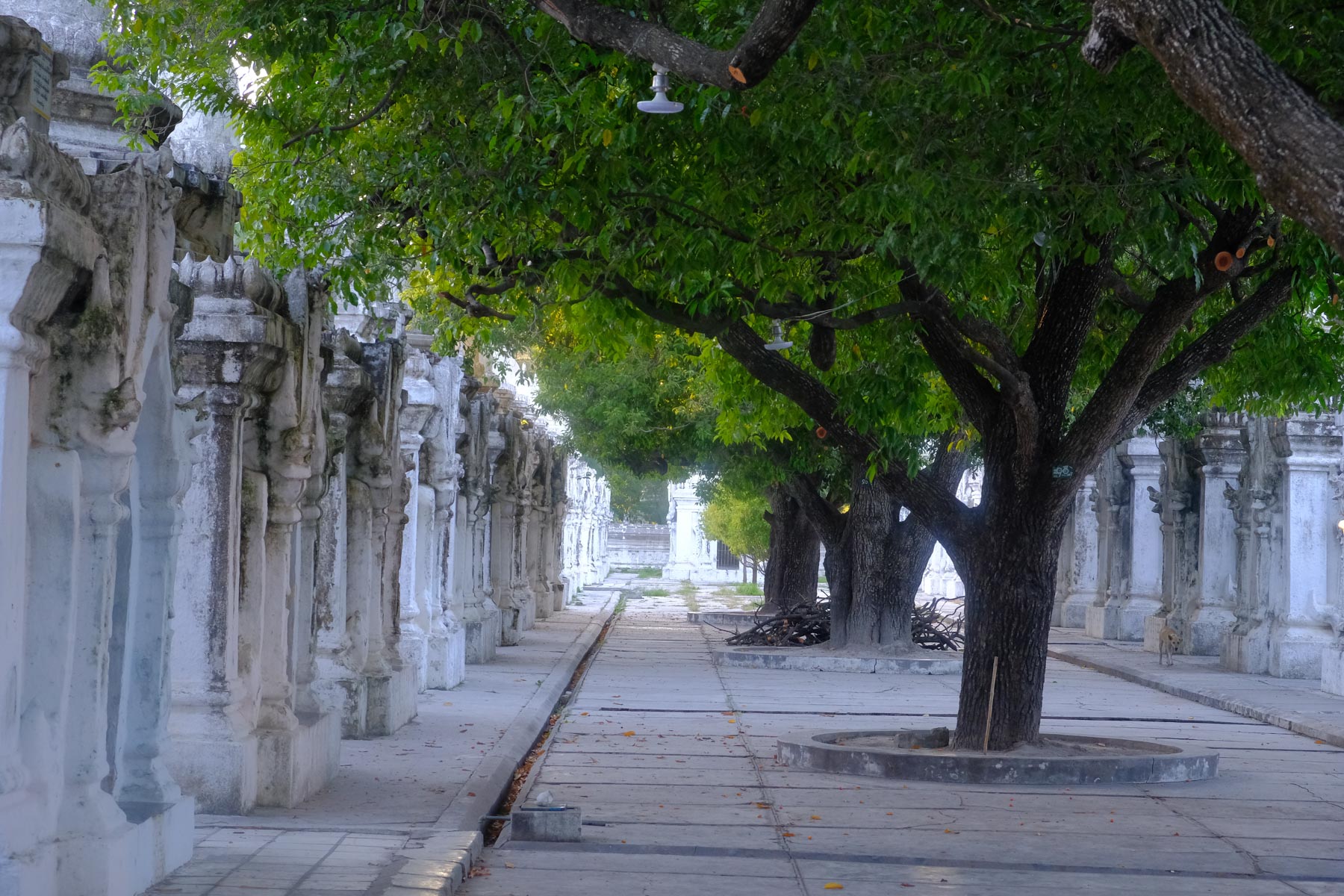
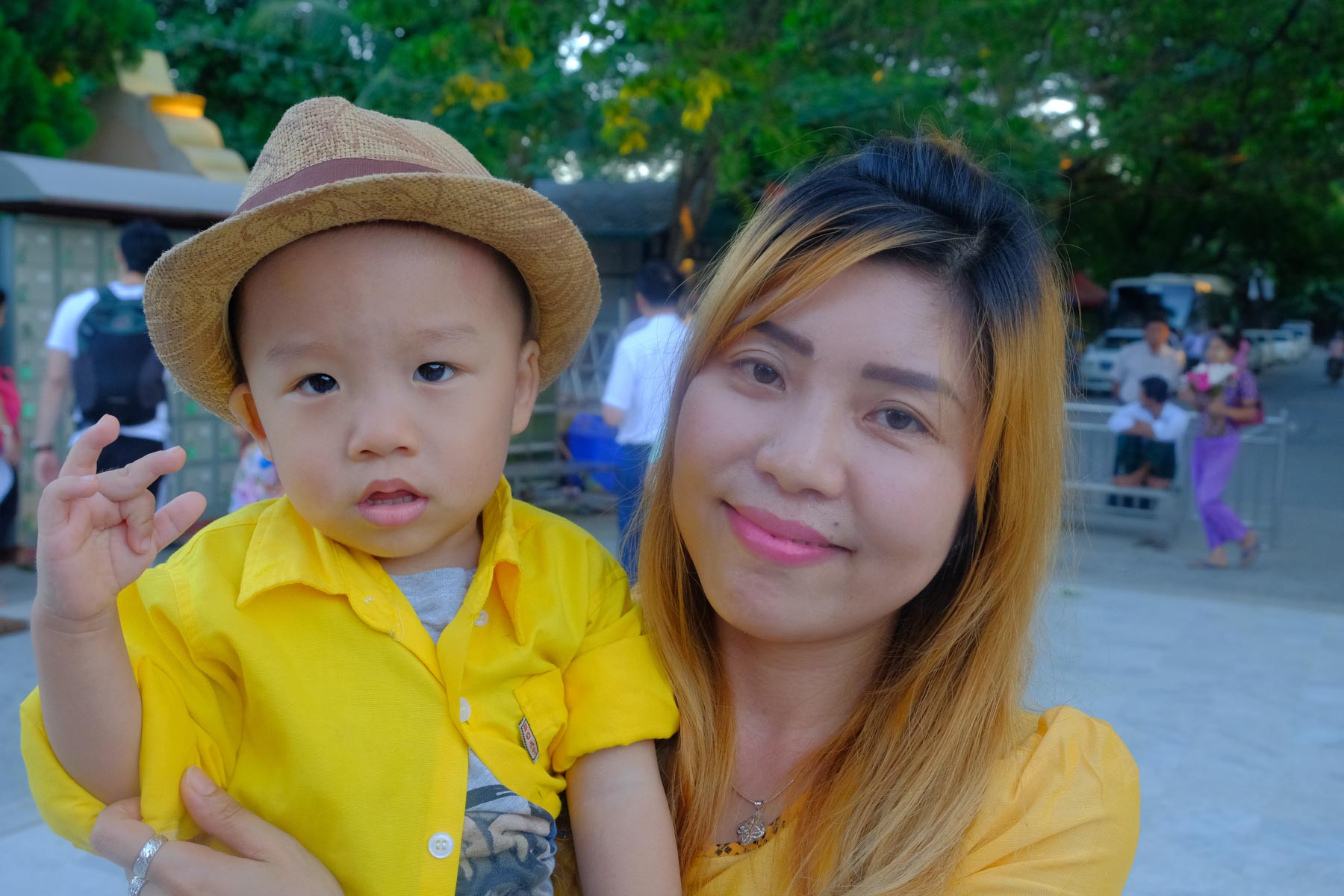
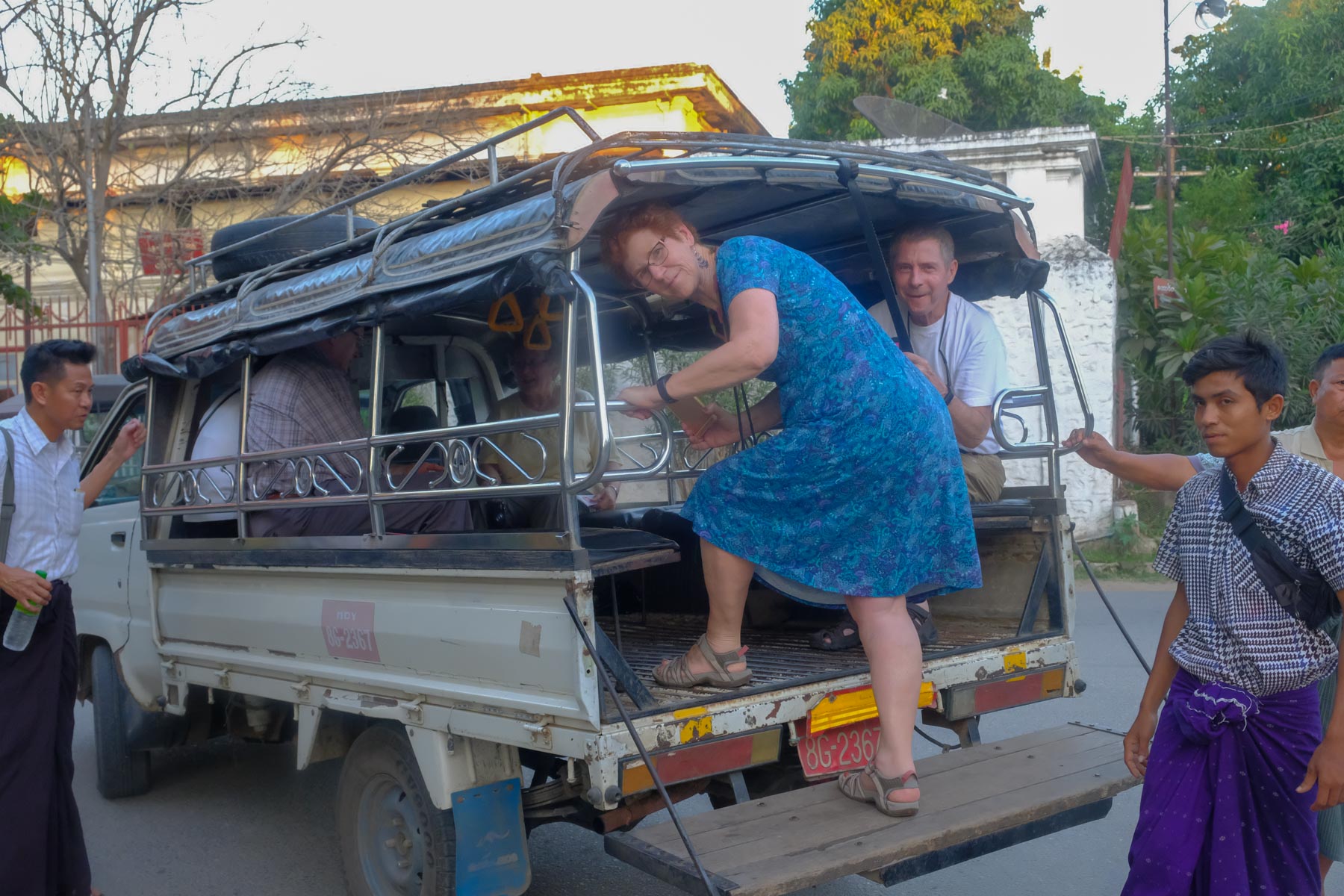

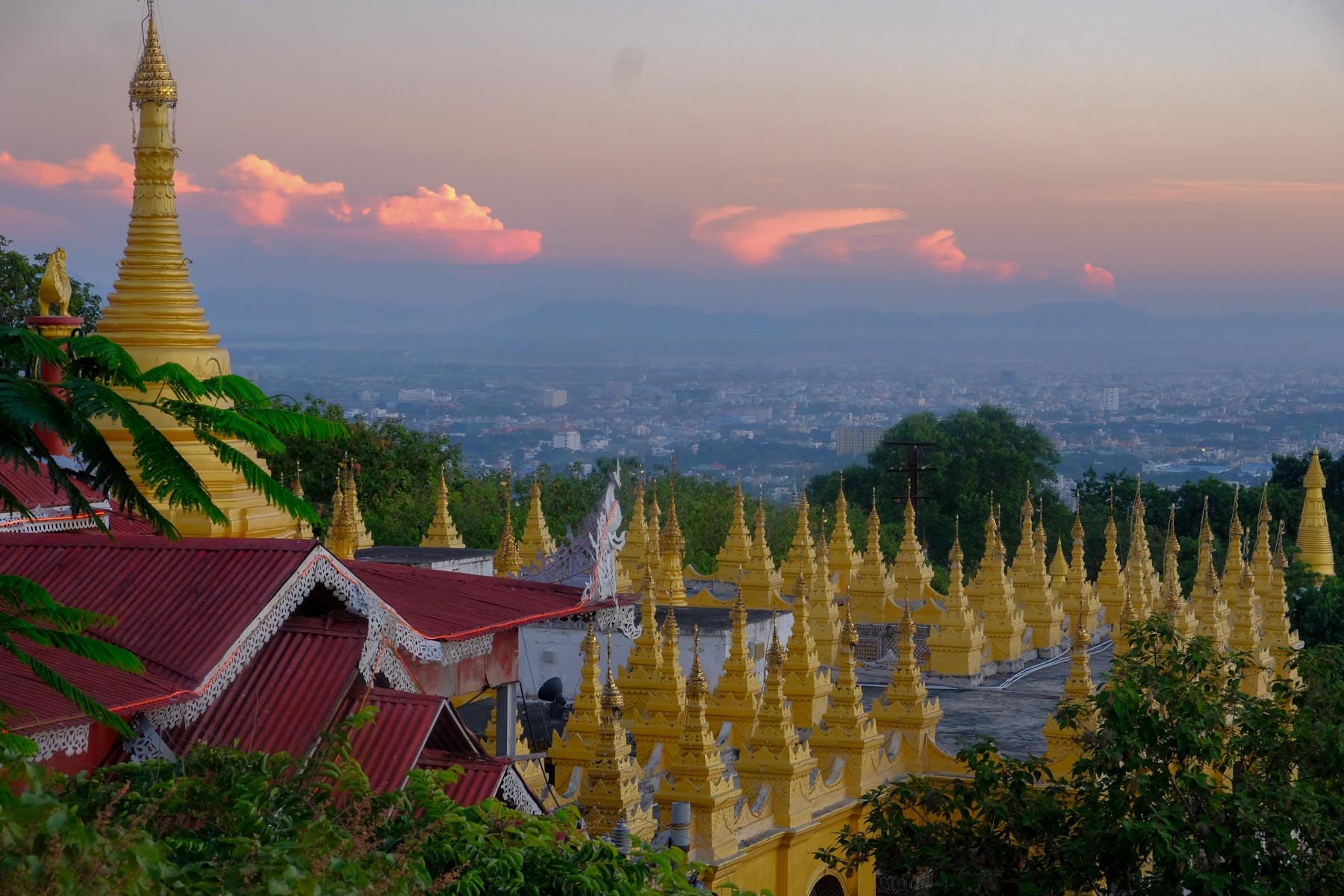

Oh my, quite the adventure. I loved hearing how the pilot got out of the plane and kicked it! Haven’t we all done that to our cars at one time or another, but a plane?
I’m not sure I would have been willing to try a fried cricket!
It sounds like you are truly enjoying the trip!
Jocelyn, Thanks for the comment. We really enjoy getting the comments and feedback. The cricket was really not that bad.